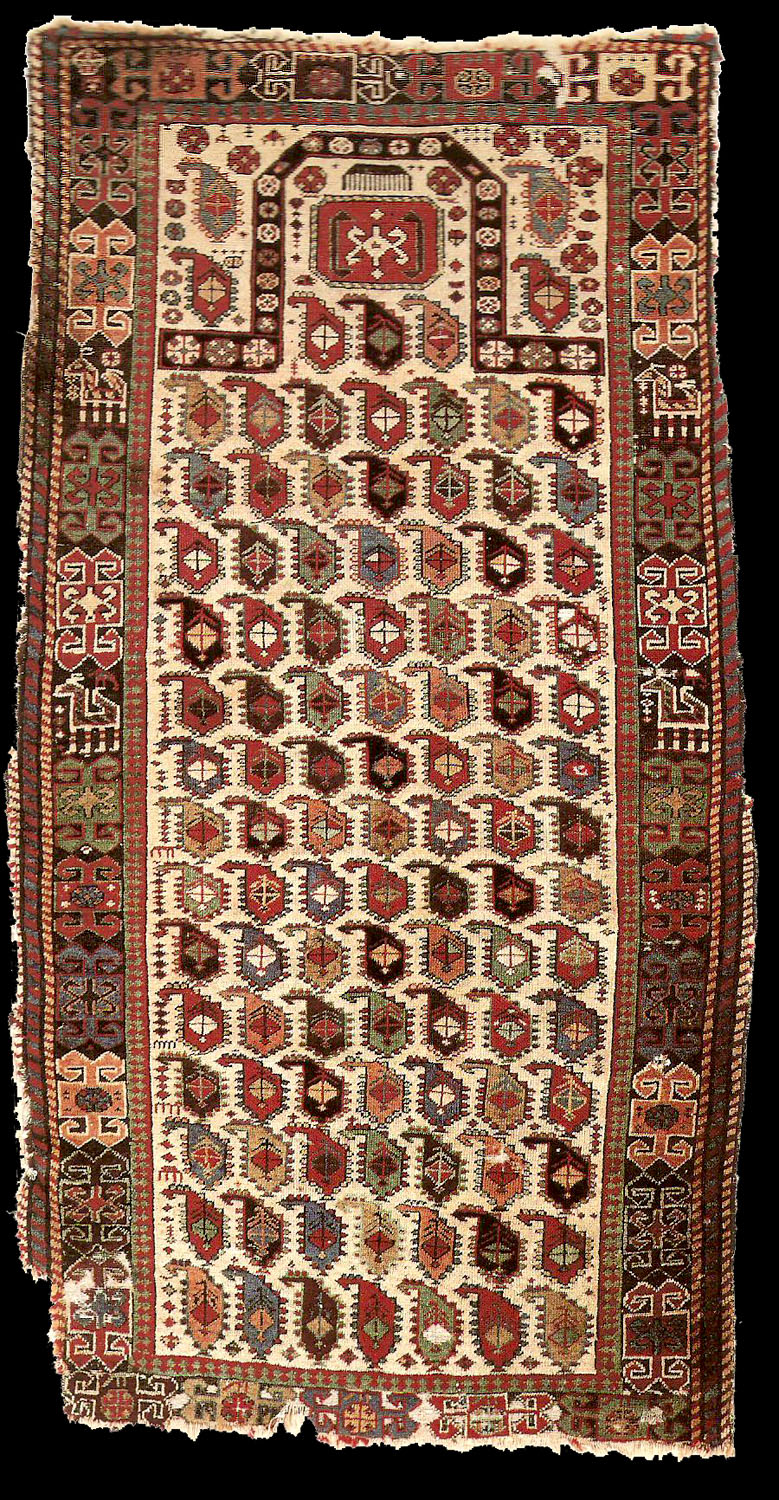|
This rug features a 'pear design' boteh. This type of boteh,
characteristically surrounded by a bead-like border, has a full body and
well-developed upper 'tail'. They are usually assigned to Akstafa and
sometimes to Daghestan. The boteh in rugs of this type contain smaller
boteh, floral and plant forms, or animals, Herrmann illustrates a rug with
all four types of boteh in alternating rows in Seltene Orientteppiche IV,
plate 25. Commenting on this rug, Herrmann writes, 'while the pattern is
basically simple, interest is provided by the diagonal colour progression
and the changing motifs the boteh. In the rug shown here the boteh are
arranged in a random fashion, without a systematic rationale based on colour
- somewhat similar in style to Marasali rugs. Unlike Marasalis, however, the
boteh on this type of rug always face in the same direction. The borders of
rugs in this group typically feature "latchhook and dice" designs or
latchhooked lozenges. This example, however, has a kochanak and animal
border, which is quite rare. The field of this rug, with the large red
octagon beneath the prayer arch, is also unusual. In a typical configuration
the boteh field would continue beneath the arch which is sometimes augmented
by a comb.
published at Ralph Kaffel's Caucasian Prayer Rugs as plate 86
 |

